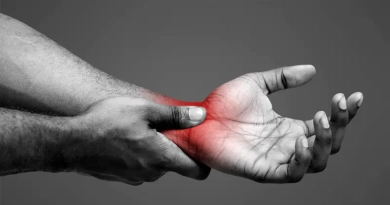
What Are The Best Tips For Solo Hiking?
Embracing Solitude
As dawn breaks, the trail ahead whispers promises of solitude and discovery. Solo hiking, a pursuit for those who seek not just to explore nature but to find a deeper connection with themselves, poses the question: What are the best tips for solo hiking? Venturing alone into the wilderness brings a unique set of challenges and rewards, and mastering them requires careful preparation and a spirited heart.
Understanding the Solo Hike
Stepping into the wilderness alone is an act of intimacy with nature, a testament to one’s fortitude and desire for personal discovery. Solo hiking is not merely a physical activity but a dance with the unknown, where every element and moment feels magnified, every rustle a conversation, every gust a challenge. Freedom is indeed exhilarating, but the weight of responsibility rests solely on one’s shoulders. Let’s delve deeper into the nuances of solo hiking, where the call of the wild meets the resolve of the human spirit.
The Core Challenges of Solo Hiking
Solo hiking strips away the communal comfort of group treks, laying bare the essential challenges of wilderness adventures. These challenges are manifold, each demanding a keen attention to detail and a proactive mindset:
- Safety: Without the immediate support of companions, a solo hiker’s safety net is their own knowledge and preparation. This means being ready not only to prevent common mishaps but also to address them effectively when they occur. Whether it’s navigating tricky terrain, managing wildlife encounters, or handling injuries, the solo hiker must be a jack-of-all-trades.
- Navigation: Losing one’s way is a much more serious concern when hiking alone. Effective navigation becomes crucial, relying heavily on pre-trip planning and real-time orientation skills.
- Mental Resilience: Perhaps the most daunting aspect of solo hiking is maintaining mental strength. The isolation can be both a balm and a burden, making psychological resilience just as important as physical stamina.
Strategies for a Safe and Fulfilling Solo Hike
The following detailed tips offer a framework to enhance both the safety and enjoyment of solo hiking adventures:
1. Thorough Planning: Understanding every aspect of your journey beforehand can significantly mitigate risks. Detailed maps should be studied, weather forecasts checked, and trail conditions researched. It’s vital to inform a trusted contact about your itinerary and expected return time, providing them with all the necessary details to alert authorities if you do not check in as planned.
2. Smart Packing: Efficiency is key when packing for a solo hike. Essentials like a reliable map and compass, a well-stocked first-aid kit, a robust multi-tool, and means for emergency shelter and fire-starting are non-negotiable. Additionally, packing must balance necessity with weight, ensuring that you carry everything you need without overburdening yourself, which can lead to increased fatigue and reduced mobility.
3. Invest in Quality Gear: Your gear is your lifeline in the wilderness. Opt for high-quality equipment that you can rely on under various weather conditions. This includes a durable backpack, a comfortable and temperature-appropriate sleeping bag, a resilient tent, and dependable hiking boots. Testing your gear in controlled conditions before heading out can prevent unexpected failures in the field.
4. Stay Connected Strategically: While the essence of solo hiking might be to disconnect, maintaining the ability to connect is crucial for emergency situations. You can reach assistance if necessary if you have a charged cell phone in a waterproof container, possibly with the help of a satellite communicator or a PLB.
5. Energy and Hydration Management: Maintain high energy levels and adequate hydration by packing nutrient-rich snacks like nuts, dried fruits, and energy bars, alongside ample water supplies. Investing in a lightweight, effective water purification system allows you to utilize natural water sources safely.
6. Navigational Vigilance: Keep a steady but sustainable pace, allowing for regular breaks to check your position and rest. Familiarize yourself with the use of a map and compass and, if available, augment this with GPS technology. Avoid hiking in darkness unless absolutely necessary and always carry a reliable headlamp.
7. Understanding and Respecting Limits: Recognize the signs of fatigue and exposure, and be prepared to turn back if conditions deteriorate or if you’re nearing your physical or psychological limits. Pushing beyond your safe threshold on a solo hike can escalate into serious situations.
8. Environmental Stewardship: Adhering to Leave No Trace principles ensures the preservation of natural habitats and minimizes the impact of your visit. Stick to marked trails, use established campsites, and pack out all your trash. Minimizing campfire impacts by using a portable stove or designated fire rings helps protect the environment.
Conclusion: The Singular Journey
As the trail unfolds uniquely for every solo hiker, each step, each breath, and each heartbeat becomes a note in the symphony of the wild. Solo hiking is as much about exploring the external expanses of nature as it is about traversing the internal landscapes of one’s thoughts and emotions. With meticulous preparation, a respect for nature’s power, and an embrace of solitude, solo hiking can transcend being merely a physical activity—it can be a profound journey of personal enlightenment and resilience.
Resources and Tools Essential for Solo Hiking
- High-Quality Backpack and Gear: Invest in durable, weather-appropriate gear.
- Emergency Communication Devices: Satellite phones or PLBs.
- Navigation Tools: Maps, compass, GPS devices.
- First-Aid Kit: Tailored to personal and general needs.
- Nutritional Supplies: High-energy food and efficient cooking tools.
Conclusion: The Soul of Solo Hiking
As the trail winds and the solitude deepens, the rewards of solo hiking become evident. With every step, the heart grows lighter, the mind clearer, and the spirit freer. Solo hiking isn’t just about the physical journey across terrains; it’s a personal voyage into the essence of nature and one’s soul. With the right preparation, knowledge, and respect for the natural world, each journey can be safe, fulfilling, and profoundly transformative.






